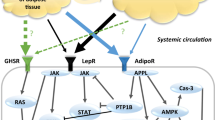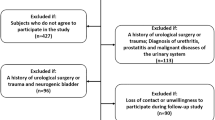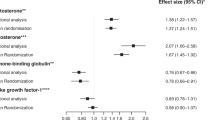Abstract
We present a review of the epidemiological evidence for relations of prostate cancer risk to circulating total and bioavailable androgens, to alterations in the metabolism of insulin-like growth factor-1 (IGF-1), and to anthropometric indices of longitudinal growth (body stature) and overweight. In addition, we review the physiological inter-relationships between insulin, growth hormone/IGF-1 axis, and sex steroid metabolism, as well as the associations of bioavailable sex steroid levels with overweight and obesity. A first conclusion of this review is that, taken together, epidemiological studies have provided little support for the hypothesis that prostate cancer risk is increased in men with elevated total or biovailable testosterone (T). Although one prospective study showed an increased risk in men with low plasma sex hormone-binding globulin (SHBG) and with elevated plasma T for given levels of SHBG, this was not confirmed by results from other cohort studies. A second conclusion is that overweight, which is generally associated with moderate reductions in both total and bioavailable plasma T, appears to be unrelated to any significant increase or decrease in prostate cancer risk. However, significant increases in risk have been observed for men with a taller body stature, or with elevated plasma IGF-1. IGF-1 may directly enhance prostate tumorigenesis by inhibiting apoptosis and by stimulating cell proliferation. In addition, IGF-1 downregulates the synthesis of SHBG, and enhances sex steroid synthesis. Therefore, we do not entirely rule out that due to an elevation of plasma IGF-1 levels, men at increased risk of prostate cancer also have mildly elevated plasma bioavailable T, which epidemiological studies may have failed to demonstrate because of methodological problems.
This is a preview of subscription content, access via your institution
Access options
Subscribe to this journal
Receive 4 print issues and online access
$259.00 per year
only $64.75 per issue
Buy this article
- Purchase on Springer Link
- Instant access to full article PDF
Prices may be subject to local taxes which are calculated during checkout
Similar content being viewed by others
Author information
Authors and Affiliations
Corresponding author
Rights and permissions
About this article
Cite this article
Kaaks, R., Lukanova, A. & Sommersberg, B. Plasma androgens, IGF-1, body size, and prostate cancer risk: a synthetic review. Prostate Cancer Prostatic Dis 3, 157–172 (2000). https://doi.org/10.1038/sj.pcan.4500421
Received:
Accepted:
Published:
Issue Date:
DOI: https://doi.org/10.1038/sj.pcan.4500421
Keywords
This article is cited by
-
“Is there any association between insulin resistance and thyroid cancer? : a case control study”
Endocrine (2014)
-
Androgenetic alopecia at various ages and prostate cancer risk in an equal-access multiethnic case–control series of veterans
Cancer Causes & Control (2013)
-
Body mass index in early and middle-late adulthood and risk of localised, advanced and fatal prostate cancer: a population-based prospective study
British Journal of Cancer (2011)
-
Risk factors for prostate cancer
Nature Clinical Practice Urology (2009)



